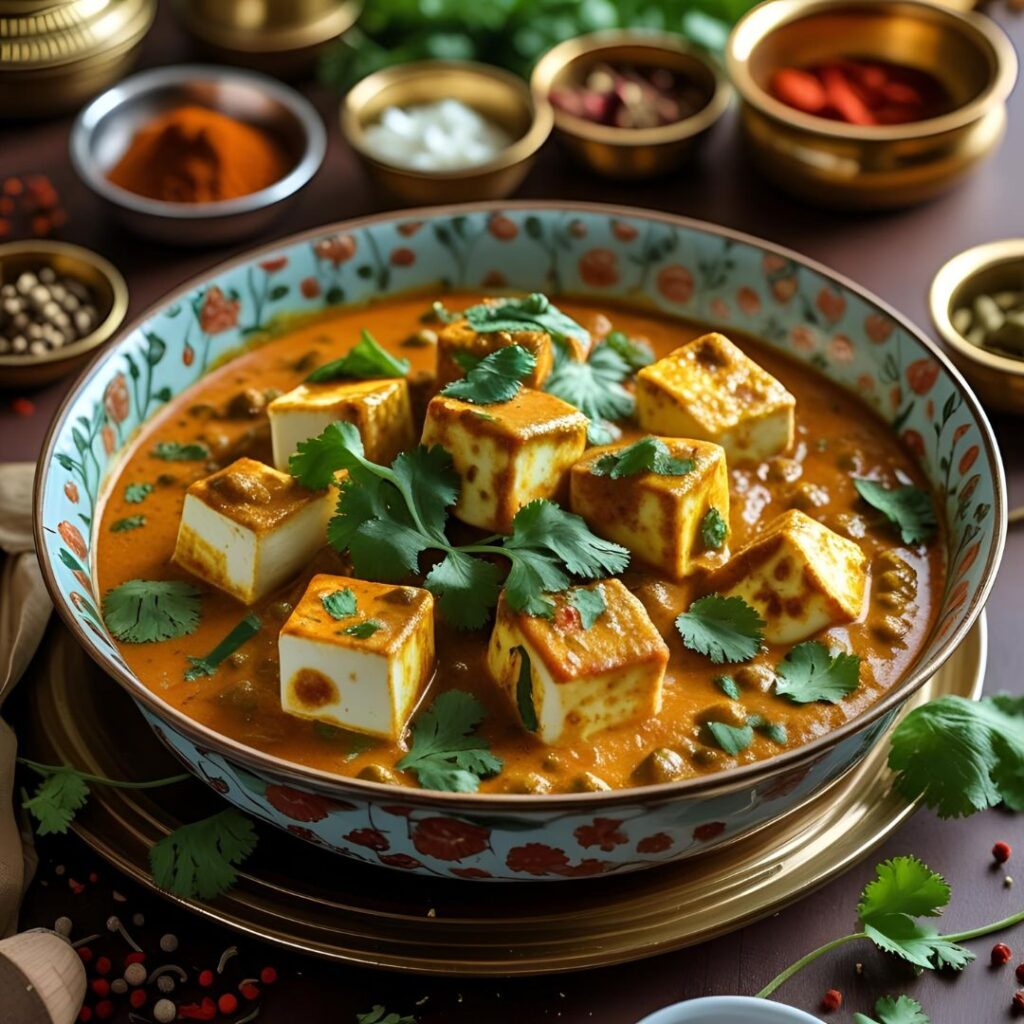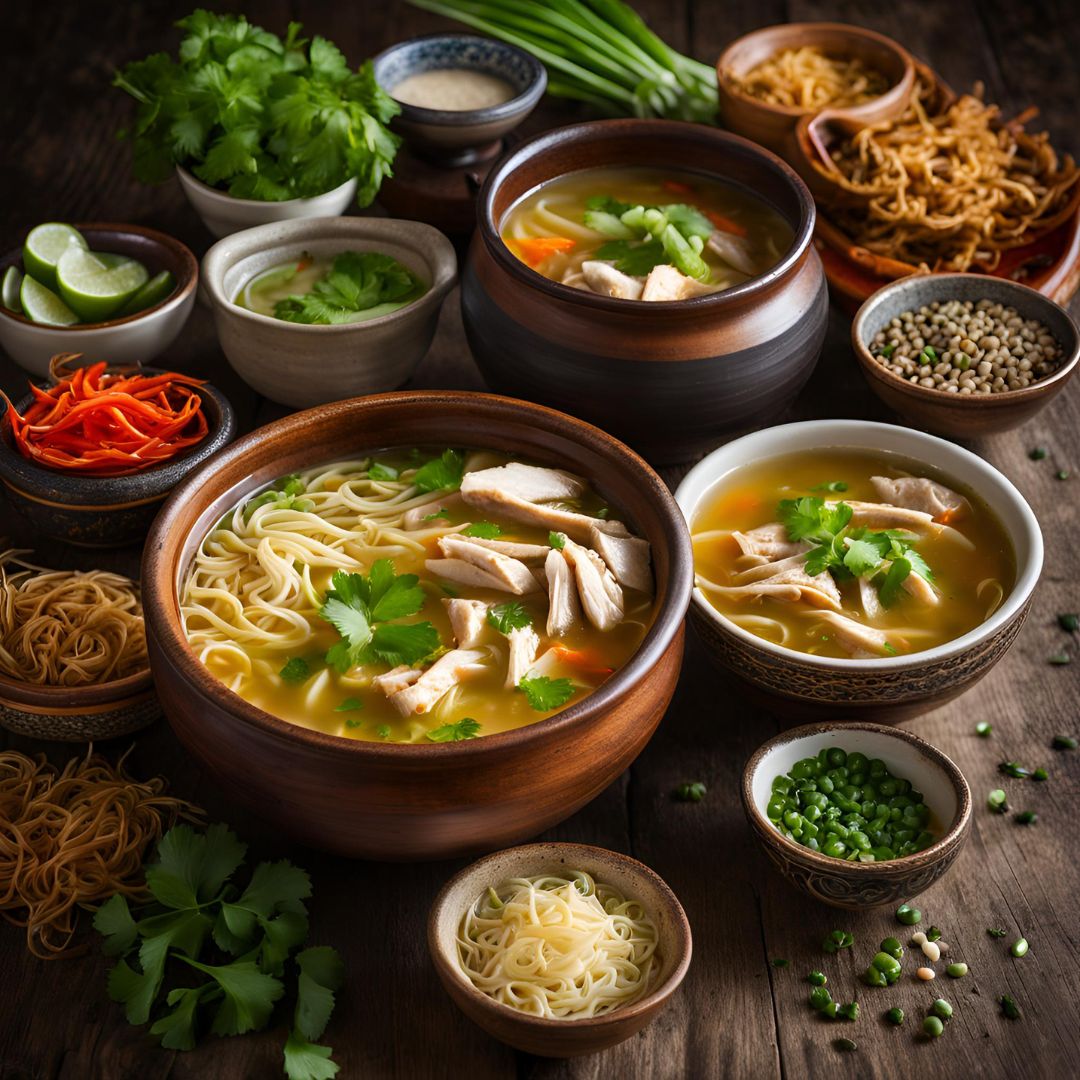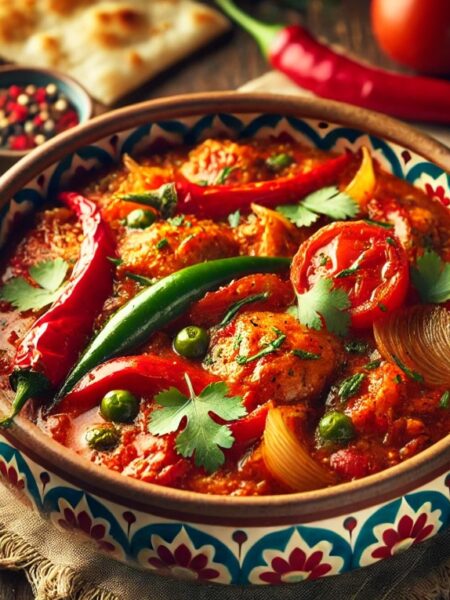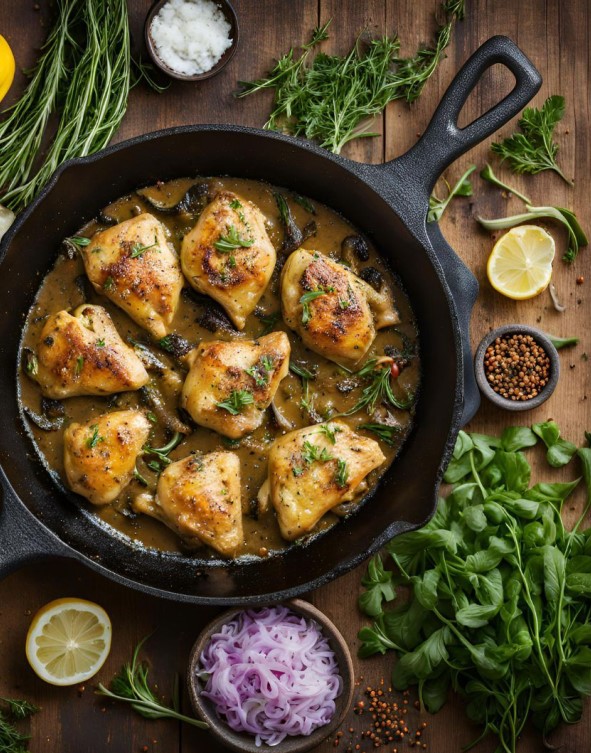Shahi Paneer Recipe : A Royal Culinary Journey Through Indian Cuisine. Indian cuisine is a treasure trove of flavors, textures, and traditions, and few dishes capture the essence of richness and indulgence as exquisitely as Shahi Paneer. A staple in North Indian households and restaurant menus alike, Shahi Paneer is not just a dish — it is an experience of regal comfort, cultural heritage, and sensory delight. The word “Shahi” means royal, and “paneer” refers to Indian cottage cheese. As the name suggests, Shahi Paneer is a preparation fit for royalty, with its luscious, creamy gravy, aromatic spices, and melt-in-the-mouth paneer cubes that create a harmony of taste and texture in every bite.
The Royal Origins of Shahi Paneer
To understand the roots of Shahi Paneer, one must delve into the grand kitchens of the Mughal Empire, whose culinary contributions have deeply influenced Indian food culture. The Mughals brought with them Persian cooking techniques, a penchant for rich gravies, dried fruits, nuts, and dairy-based sauces. Shahi Paneer evolved as a vegetarian counterpart to royal meat dishes like Shahi Murgh or Nawabi Korma, incorporating luxurious ingredients like cashews, cream, saffron, and aromatic spices in a rich, smooth gravy that embodied opulence.
While the original royal kitchens may have used rare and expensive ingredients, today’s version of Shahi Paneer brings that same spirit of grandeur to our everyday tables with easily accessible components, blending traditional Mughalai methods with regional Indian tastes.
Cultural Significance and Popularity
Shahi Paneer has transcended its royal roots to become one of the most beloved vegetarian dishes in Indian cuisine. It is a staple in celebrations, weddings, religious festivals, and Sunday family lunches. In Indian culture, paneer occupies a special place as a revered protein source for vegetarians. Unlike tofu or cheese used in other cuisines, paneer does not melt when heated, making it perfect for soaking up the flavors of rich gravies like that of Shahi Paneer.
The dish is commonly served with naan, kulcha, jeera rice, or parathas, and often graces the buffet tables of both casual and formal events. It is particularly popular in North Indian states like Punjab, Uttar Pradesh, and Delhi, but its fame has spread across the country and even internationally, making it a go-to item on Indian restaurant menus worldwide.
Flavors and Textural Richness
What sets Shahi Paneer apart from other paneer dishes like Paneer Butter Masala or Paneer Tikka Masala is its mild, slightly sweet, and deeply creamy taste profile. Unlike dishes that rely heavily on tomatoes for tanginess or spices for heat, Shahi Paneer focuses on subtle warmth, rich mouthfeel, and gentle aromatic complexity.
The signature gravy is typically made from a base of onions, tomatoes, cashews, and cream — blended to a silky texture. Often enhanced with ghee, cardamom, cinnamon, and cloves, it creates a flavor profile that is indulgent without being overwhelming. Some regional versions include saffron, which imparts a golden hue and a floral aroma, while others may lean more on yogurt or curd for tang and body.
The paneer itself acts as a blank canvas, absorbing and enhancing the luxurious sauce it’s cooked in. The result is a balanced dish where creaminess meets spice, and simplicity meets sophistication.
Ingredients that Define Royalty
While the ingredient list for Shahi Paneer is relatively straightforward, each component plays a critical role in building layers of flavor and richness.
- Paneer: The star of the dish, paneer must be fresh and soft. Homemade paneer or good-quality store-bought versions work best. Some cooks soak paneer cubes in warm water before use to ensure maximum softness.
- Cashews: Used to thicken the gravy and add natural sweetness and richness without overwhelming the palate.
- Cream: Brings smoothness and a luxurious texture to the gravy. Some use full-fat milk or curd as a substitute.
- Onions and Tomatoes: The classic foundation of Indian gravies, these are simmered and blended to form the body of the dish.
- Aromatic Spices: Cardamom, cinnamon, bay leaves, and cloves provide fragrance, while garam masala adds warmth and depth.
- Ghee: Traditional Indian clarified butter enhances richness and adds a subtle nutty flavor.
- Saffron and Rose Water (optional): Some versions include these to elevate the dish’s aroma and give it an exotic twist.
Each element in the dish, while simple on its own, comes together to create a result that is far greater than the sum of its parts.
Regional and Modern Variations
Over the years, Shahi Paneer has seen a variety of regional adaptations and modern twists. In Punjabi kitchens, the dish is often richer, sometimes finished with butter and additional cream, making it even more indulgent. In contrast, versions served in vegetarian Jain households may omit onion and garlic entirely, replacing them with ginger and curd while still preserving the dish’s essential character.
Modern versions of Shahi Paneer might use ingredients like almond paste instead of cashews, or coconut cream for a dairy-free or South Indian fusion. In international kitchens, it’s not uncommon to find Shahi Paneer paired with couscous, quinoa, or even used as a pasta sauce base — a testament to its adaptability and universal appeal.
Health and Nutrition Considerations
Despite its rich profile, Shahi Paneer can be part of a balanced diet when enjoyed in moderation. Paneer is a good source of protein and calcium, especially valuable for vegetarians. The nuts and cream provide healthy fats, though they can be heavy if consumed excessively.
Health-conscious versions often substitute full cream with low-fat cream, milk, or yogurt, and reduce the use of ghee or butter. Using homemade paneer from toned milk can also reduce overall fat content while retaining flavor and texture.
Why Shahi Paneer Continues to Delight
What keeps Shahi Paneer relevant and cherished across generations is its comforting richness, its versatility, and the nostalgia it evokes. Whether served at a festive dinner or cooked as a weekend treat, it brings together family, flavors, and tradition in a single dish.
It is a celebration of Indian culinary ingenuity — showing how vegetarian food can be both luxurious and deeply satisfying. For newcomers to Indian food, it’s an accessible yet impressive introduction. For seasoned food lovers, it’s a classic that never fails to impress.
Ingredients – Shahi Paneer Recipe
For the gravy:
- 250 grams paneer, cut into cubes
- 2 medium onions, roughly chopped
- 2 large tomatoes, chopped (or ¾ cup tomato purée)
- 12 cashew nuts
- 1inch piece ginger
- 4 garlic cloves
- 2 tbsp fresh cream
- 2 tbsp curd (optional, for richness)
- 3 green cardamoms
- 1 small bay leaf
- 1-inch cinnamon stick
- 3 cloves
- 1/2 tsp cumin seeds
- 1/2 tsp garam masala
- 1/4 tsp turmeric powder
- 1/2 tsp coriander powder
- 1/2 tsp red chili powder (adjust to taste)
- 1 tbsp ghee or oil
- Salt to taste
- 1/2 tsp sugar (optional, for balance)
- 1/2 cup water (adjust for consistency)
- 1 tsp kasuri methi (optional, crushed)
For garnish:
- 1 tbsp chopped coriander (optional)
- 1 tbsp cream or saffron-infused milk
Cooking Instructions – Shahi Paneer Recipe
1. Prepare the Nut Base (10 minutes)
- Soak cashews in warm water for 10 minutes.
- Boil or sauté onions and tomatoes until soft. Let cool.
- Blend soaked cashews, boiled onions, tomatoes, garlic, and ginger into a smooth paste.
2. Cook the Masala (12 minutes)
- Heat ghee or oil in a pan. Add cumin seeds, bay leaf, cardamoms, cinnamon, and cloves.
- Add the onion-tomato-cashew paste.
- Cook on medium heat until the paste thickens and oil starts to separate (about 8–10 minutes).
3. Add Spices and Cream (5 minutes)
- Add turmeric, coriander, red chili powder, and salt. Mix well.
- Add curd (if using), stir quickly to prevent curdling.
- Add 1/2 cup water to adjust consistency.
- Simmer for 3-4 minutes, then add cream and garam masala.
4. Add Paneer and Finish (5 minutes)
- Gently add paneer cubes.
- Simmer for another 2–3 minutes. Do not overcook to avoid rubbery paneer.
- Sprinkle crushed kasuri methi and sugar (if needed) for balance.
- Turn off the heat.
5. Garnish and Serve (2 minutes)
- Drizzle some cream or saffron milk.
- Garnish with chopped coriander or slivered nuts.
Total Time- 45 minutes
Serves – 4 Persons
Essential Cooking Tips – Shahi Paneer Recipe
1. Use Fresh and Soft Paneer for Best Texture
The quality and texture of paneer can make or break your Shahi Paneer. Always use fresh, soft paneer—whether homemade or store-bought. If using packaged paneer, soak the cubes in warm water for 10–15 minutes before adding them to the gravy. This step helps rehydrate the paneer, making it softer and more absorbent. Shahi Paneer is meant to have a luxurious, melt-in-the-mouth feel, and tough or rubbery paneer will compromise that royal experience. If possible, make your own paneer from full-cream milk, which results in a creamier texture and richer flavor.
2. Blend the Gravy Ingredients Smoothly for a Silky Finish
One hallmark of Shahi Paneer is its velvety, smooth gravy. This effect comes from properly blending the onions, tomatoes, cashews, and spices into a fine, lump-free paste. After cooking these base ingredients, allow them to cool before blending to avoid steam buildup in your blender. Straining the blended mixture is optional, but highly recommended if you want a restaurant-quality finish. The smoother the gravy, the more it reflects the “shahi” (royal) feel—no grainy texture, no large chunks—just a rich, silky sauce that coats every piece of paneer beautifully.
3. Add Cream and Yogurt Carefully to Avoid Curdling
Cream and yogurt are used in Shahi Paneer to create a rich and creamy consistency, but they must be added with care to prevent curdling. Always lower the heat before adding these ingredients. If using yogurt (curd), whisk it well beforehand and add it slowly while stirring continuously to stabilize the temperature. For fresh cream, add it toward the end of the cooking process and do not boil the curry vigorously afterward. Overheating dairy products can cause them to separate, leading to an unpleasant texture and loss of richness in the final dish.
4. Balance Flavors with Mild Sweetness and Gentle Spices
Shahi Paneer is known for its mild, slightly sweet, and aromatic flavor profile, rather than bold heat or sourness. To achieve this balance, use sweet cashew paste, a touch of sugar, and warm spices like cardamom, cinnamon, and cloves. Avoid overusing red chili powder or excessive garam masala, which can overpower the delicate richness of the dish. If your tomatoes are very tangy, neutralize the acidity with a pinch of sugar or by increasing the cream slightly. Remember, the goal is a harmonious blend of savory, sweet, and aromatic—not spicy or acidic.
5. Finish with Kasuri Methi and Garnish for Aroma and Depth
For that signature restaurant-style aroma and final flourish, always finish your Shahi Paneer with a pinch of crushed kasuri methi (dried fenugreek leaves) and a drizzle of fresh cream or saffron-infused milk. Kasuri methi adds an earthy depth and subtle bitterness that contrasts the richness of the gravy, enhancing complexity without adding heat. If you’re aiming for a luxurious presentation, garnish with slivered almonds, saffron strands, or a swirl of cream. These touches not only add visual appeal but also elevate the flavor and aroma, making the dish truly “shahi.”
Important FAQs (Frequently Asked Questions) – Shahi Paneer Recipe
What is Shahi Paneer?
Shahi Paneer is a rich and creamy North Indian curry made with paneer (Indian cottage cheese) simmered in a mildly spiced, nut-based gravy. The word “Shahi” translates to “royal,” and true to its name, the dish features luxurious ingredients like cream, butter, and cashew or almond paste, often flavored with aromatic spices such as cardamom, cloves, and cinnamon.
What ingredients are essential for this recipe of Shahi Paneer?
Key ingredients include paneer, onions, tomatoes, cashew or almond paste, fresh cream, yogurt or milk, ginger-garlic paste, and whole or ground Indian spices like garam masala, cumin, and cardamom. Some versions may also include saffron or rose water to enhance the royal aroma and richness.
How is Shahi Paneer Recipe different from Paneer Butter Masala or Kadai Paneer?
Shahi Paneer is milder and creamier, relying heavily on nuts and dairy for its richness, with a subtle sweetness and royal flavor. Paneer Butter Masala is tangier and sweeter due to the use of more tomatoes and sugar, while Kadai Paneer is spicier and has a more robust, sautéed flavor from bell peppers and freshly ground spices.
Can I make this recipe of Shahi Paneer without onions and garlic?
Yes, Shahi Paneer can be made without onions and garlic, making it suitable for Jain diets or during fasting. Simply omit these ingredients and use more tomatoes, nuts, and spices to maintain flavor and texture. Add a bit of ginger paste, if desired, for mild pungency.
Which nuts are best for the gravy—cashews or almonds?
Cashews are most commonly used for their naturally creamy texture and neutral flavor. However, blanched almonds can also be used or combined with cashews for a slightly nuttier and richer taste. Always soak the nuts before blending to ensure a smooth paste.
What type of paneer should I use for this recipe of Shahi Paneer ?
Use fresh, firm paneer that is soft yet holds its shape well when cubed. Homemade paneer is ideal, but store-bought versions work too. If using packaged paneer, soak it in warm water for 10–15 minutes to soften before adding it to the curry.
Can I make this dish vegan?
Yes, to make vegan Shahi Paneer, substitute paneer with firm tofu, use plant-based cream (like cashew or coconut cream), and replace dairy milk or yogurt with almond or oat milk. Ensure that the tofu is well-pressed and slightly pan-fried for a firmer texture.
What can I serve with Shahi Paneer?
Shahi Paneer pairs best with Indian breads such as naan, roti, paratha, or puri. It can also be served with fragrant basmati rice, jeera rice, or mildly spiced pulao. A side of salad or pickles enhances the meal further.
How do I store and reheat Shahi Paneer made with this recipe?
Store leftovers in an airtight container in the refrigerator for up to 3 days. To reheat, gently warm it on the stove or microwave, adding a splash of water or milk if the gravy thickens too much. Avoid overcooking to prevent the paneer from becoming chewy.
Is this recipe of Shahi Paneer spicy?
Traditionally, Shahi Paneer is mildly spiced, with a focus on rich, aromatic flavors rather than heat. You can adjust the spice level by controlling the amount of green chili or red chili powder used, making it suitable for both kids and adults.
Shahi Paneer Recipe
A staple in North Indian households and restaurant menus alike, Shahi Paneer is not just a dish — it is an experience of regal comfort, cultural heritage, and sensory delight. The word “Shahi” means royal, and “paneer” refers to Indian cottage cheese. As the name suggests, Shahi Paneer is a preparation fit for royalty, with its luscious, creamy gravy, aromatic spices, and melt-in-the-mouth paneer cubes that create a harmony of taste and texture in every bite.

Ingredients - Shahi Paneer Recipe
For the gravy:
For garnish:
Cooking Instructions - Shahi Paneer Recipe
1. Prepare the Nut Base (10 minutes)
- • Soak cashews in warm water for 10 minutes.
- • Boil or sauté onions and tomatoes until soft. Let cool.
- • Blend soaked cashews, boiled onions, tomatoes, garlic, and ginger into a smooth paste.
2. Cook the Masala (12 minutes)
- • Heat ghee or oil in a pan. Add cumin seeds, bay leaf, cardamoms, cinnamon, and cloves.
- • Add the onion-tomato-cashew paste.
- • Cook on medium heat until the paste thickens and oil starts to separate (about 8–10 minutes).
3. Add Spices and Cream (5 minutes)
- • Add turmeric, coriander, red chili powder, and salt. Mix well.
- • Add curd (if using), stir quickly to prevent curdling.
- • Add 1/2 cup water to adjust consistency.
- • Simmer for 3-4 minutes, then add cream and garam masala.
4. Add Paneer and Finish (5 minutes)
- • Gently add paneer cubes.
- • Simmer for another 2–3 minutes. Do not overcook to avoid rubbery paneer.
- • Sprinkle crushed kasuri methi and sugar (if needed) for balance.
- • Turn off the heat.
5. Garnish and Serve (2 minutes)
- • Drizzle some cream or saffron milk.
- • Garnish with chopped coriander or slivered nuts.





